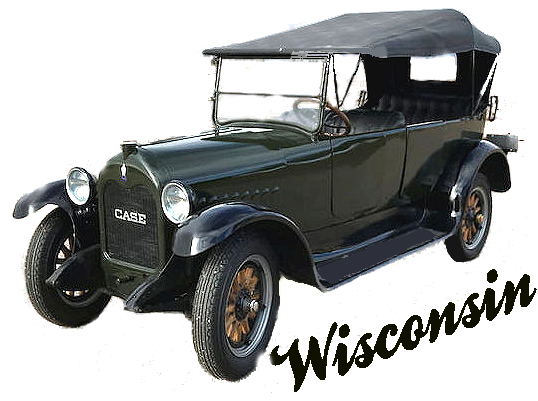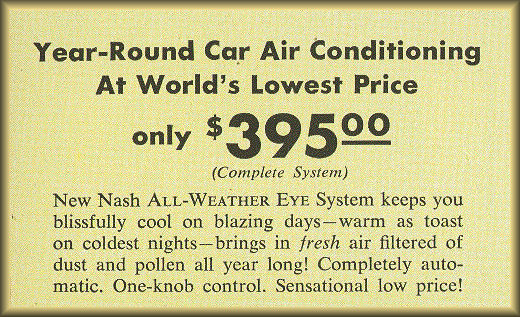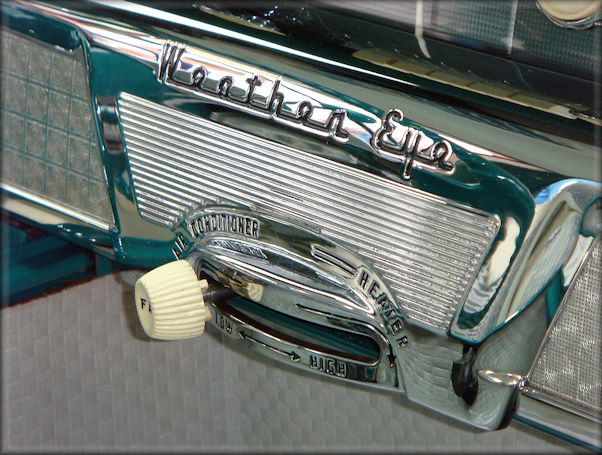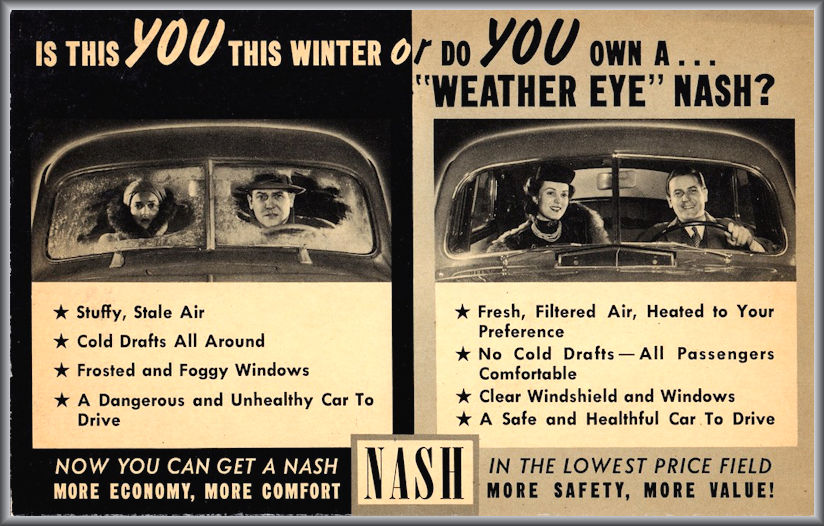


Mobile users:
For best results, view in Landscape mode.
A company in New York City in the
U.S. first offered installation of air
conditioning for cars in 1933.
Most of their customers operated
limousines and luxury cars.
Then Packard in 1939,
Cadillac in 1941,
followed by the Chrysler
Imperial in 1953.
Cadillac, Buick, and Oldsmobile
added air conditioning as an option
on some of their models in the
1953 model year.
All of these systems used separate
engine and trunk mounted
components.
These early A/C systems still ran
independently of the heating and
defrosting systems.
And the systems still ran continuously,
requiring removing the belt to
disengage the compressor.
The Nash "All-Weather Eye"
was the first automobile air
conditioning system for the
mass market.

The Weather Eye was a trade name
for a Nash Motors-designed fresh
air system for automobile passenger
compartment heating, cooling,
and ventilating.
In 1938, Nash Motors developed the
first automobile heater warmed
by hot engine cooling water, and
using fresh air called
"The Weather Eye".
The first car heater that took in
fresh air and passed it over a
heater core full of hot radiator
water.
( How it’s still done today )
In 1939, Nash added a thermostat
to its system, making it the first
thermostatic automobile climate
control system.
Nash included the first automatic
temperature control
to maintain passenger comfort.

Additionally, defrosters were added
with the introduction of the
3900 series cars.
Nash was also the first company to
make use of a disposable filter in the
air-intake to clean incoming air.
Nash also was the first the use of slight
pressurization within the passenger
compartment to eliminate the infiltration
of cold outside air during winter
use.

In 1954, the Nash Ambassador
was the first American automobile
to have a front-end, fully integrated
heating, ventilating, and A/C
system.
Also in 1954, Nash introduced the
automobile industry's first compact
and affordable single-unit heating and
air conditioning system optional for
its all Nash Ambassador and
Rambler models.
It was a vapor-compression
refrigeration system with a compact
under the hood and cowl area
installation.
Combining heating, cooling, and
ventilating, the new air conditioning
system for the Nash cars was
called the "All-Weather Eye".
And unlike its predecessors,
the All-Weather Eye didn’t drive
the air conditioning compressor
continuously, whether it was being
used or not.
Instead, it used an electrically
operated clutch to engage or
disengage the compressor as
needed, just like on today's air
conditioning systems.
This was the first true automotive
HVAC system.
The air conditioner system was
also easily serviceable with
all of its components installed
under the hood or in the cowl
area.
With a single thermostatic control,
the Nash passenger compartment air
cooling option was described as
"a good and remarkably inexpensive"
system.
The use of the Weather Eye name was
continued by AMC after the merger
of Nash-Kelvinator Corporation
and Hudson Motor Car Company.
In 1967, improved versions of the
"Weather-Eye" heater, fresh-air
ventilation was standard on every
AMC Ambassador.
In 1968, all Ambassadors models
came with air conditioning as
standard equipment, a feature that
at that time still costed extra
on the Cadillac, Lincoln, and
Imperial models.
American Motors kept the name
"Weather Eye" in use until 1979.
The design principles of the Nash
Weather Eye system are still in
use by nearly every car today.
